Wondering how much braces cost in 2025?
Prices can vary widely based on the type of braces, treatment complexity, and location. On average, the cost falls between $2,750 and $10,000, but in some cases, it can range from $3,000 up to $13,000.
This guide covers everything you need to know—from the price of traditional metal braces and clear aligners to how insurance works and ways to make treatment more affordable. Whether you're planning for yourself or a family member, this breakdown will help you budget confidently and make informed decisions.
Key Takeaways
-
In 2025, braces cost range from $3,000 to $8,000, varying by type, complexity, and geographical factors.
-
Dental insurance can cover up to 50% of braces costs, significantly reducing out-of-pocket expenses for patients.
-
Affordable orthodontic alternatives include dental school programs, at-home clear aligners, and discount dental plans, providing cost-effective treatment options.
Braces Cost Overview in 2025
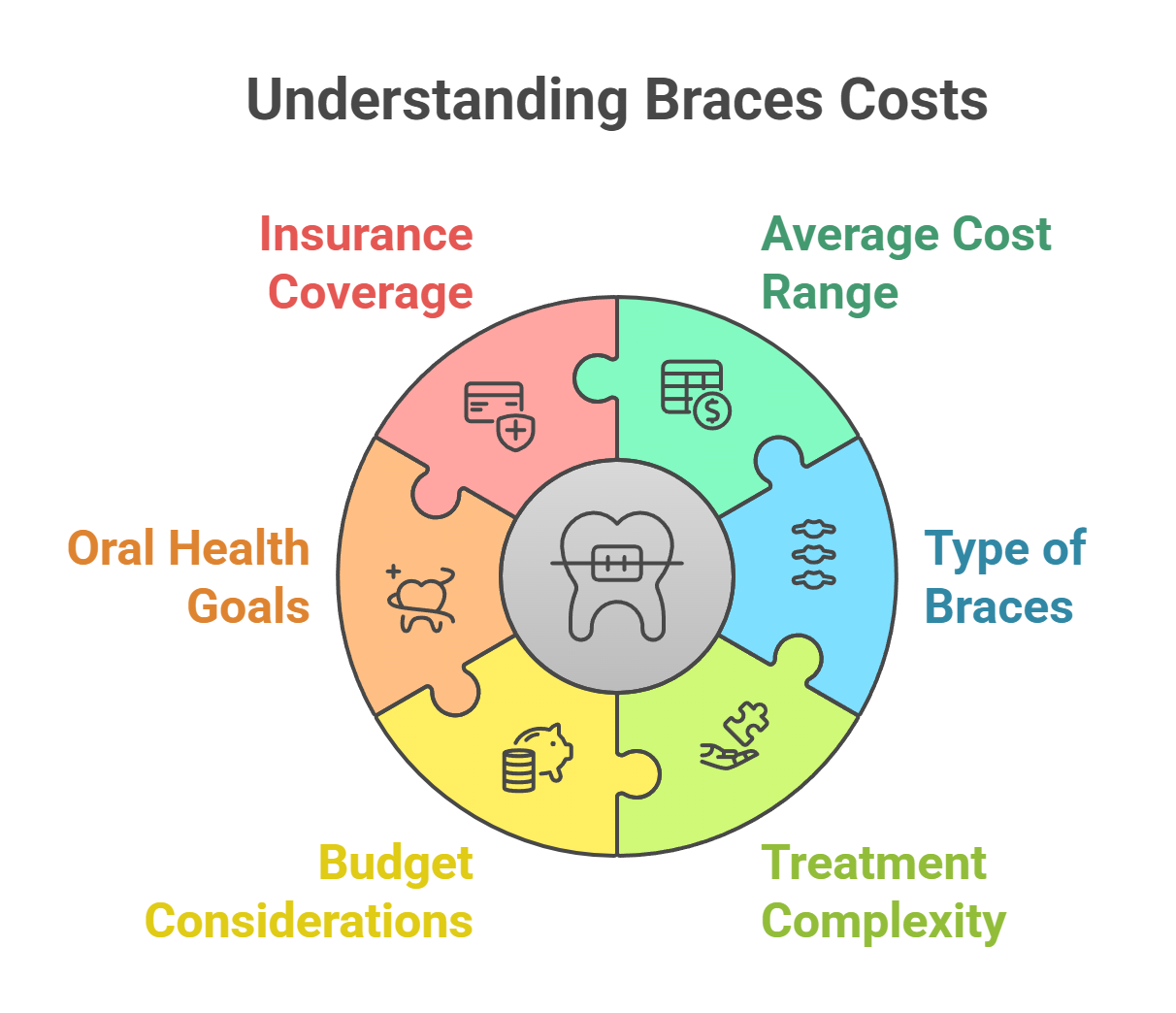
How much do braces cost in 2025? On average, the total cost of orthodontic treatment ranges from $3,000 to $8,000, though it can extend up to $13,000 depending on the type of braces and treatment complexity. Understanding the different options can help you choose the best fit for your budget, oral health goals, and insurance coverage.
Average Cost by Type of Braces

Each type has a different treatment cost depending on the materials used, the experience of your professional dentist or orthodontist, and whether or not you have dental insurance or access to flexible payment plans.
Traditional Metal Braces
Traditional metal braces remain one of the most affordable and effective solutions for correcting misaligned teeth. Costing between $2,750 and $7,500, these braces use stainless steel brackets and archwires to gradually realign your smile. Many dental insurance plans cover braces of this type, making them ideal for both children and adult orthodontics.
Ceramic Braces
Ceramic braces are similar to metal braces but use tooth-colored or clear brackets for a more discreet appearance. They cost between $4,000 and $8,000, reflecting their premium materials. While more fragile than metal braces, they’re a popular choice for those wanting an aesthetic option without the price tag of lingual braces or clear aligners.
Lingual Braces
Lingual braces are hidden behind the teeth, offering a completely invisible solution—but at a higher cost. Prices start around $8,000 and go up to $13,000 or more, mainly due to custom fitting and longer chair time with specialists. This makes them a premium option, especially in adult braces treatment plans.
Clear Aligners
Clear aligners like Invisalign have become a go-to for discreet and flexible orthodontic treatment. Costing between $3,500 and $8,000, the average cost typically falls around $5,000–$6,000. Factors that influence cost include case complexity, the number of aligners, and the provider’s experience.
Clear aligners are often eligible for flexible spending accounts (FSA) or health savings account (HSA) reimbursement, lowering your out-of-pocket expenses. They're also ideal for those seeking a confident smile without the look of traditional braces.
Impact of Insurance on Braces Costs
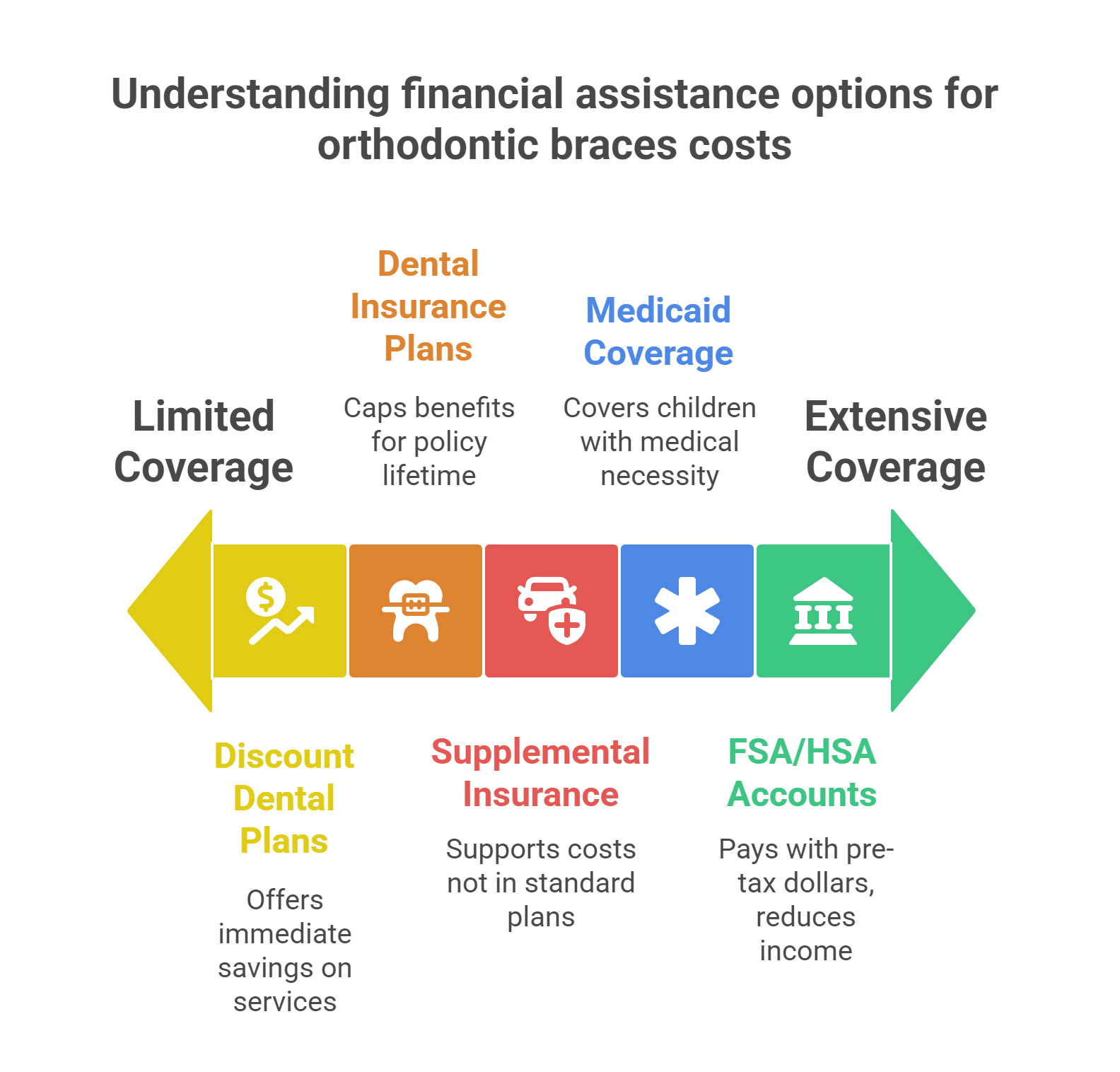
For many families, dental insurance plays a crucial role in making orthodontic care more affordable. It can reduce out-of-pocket expenses for braces by up to 50%, depending on the policy and treatment complexity.
How Insurance Affects Braces Costs
Without insurance, the average cost for braces in 2025 typically ranges from $4,000 to $8,000, depending on the type of braces, whether you're getting traditional metal or self-ligating braces, and how complex your alignment case is.
However, with insurance, most patients can expect to pay significantly less—typically around $1,000 to $3,000. Patients with coverage often face out-of-pocket expenses ranging between $1,638 and $4,933, depending on their health plan, lifetime coverage limits, and eligibility status.
Doing an insurance benefit check before beginning treatment can help clarify how much your plan provider will cover and avoid unexpected charges during your orthodontic journey.
Dental Insurance Plans
Many dental insurance plans offer orthodontic coverage, often capping benefits between $1,000 and $3,500 for the lifetime of the policy. These benefits are usually better for children than for adult patients, though some adult plans may include supplemental orthodontic insurance to cover a portion of the expense.
If your insurance cover includes braces, it typically applies to treatments involving traditional metal brackets, clear aligners, or even newer options like self-ligating braces. It’s important to read your complete price guide or consult your orthodontist's office to determine what's included.
Discount Dental Plans
As an affordable option to insurance, discount dental plans offer 15%–25% off orthodontic services like braces. Most plans cost around $100–$200 per year and provide immediate savings—ideal for those without coverage.
While they don’t technically replace insurance, they help lower costs on services such as oral hygiene visits, metal brackets, and other routine dental care associated with braces.
Medicaid Coverage
In certain cases, Medicaid may cover braces for children under 21 if treatment is deemed medically necessary—often related to severe bite issues or risks of gum disease. Adults are less likely to receive coverage, as Medicaid prioritizes emergency care.
Coverage guidelines vary by state, so always verify with your local plan provider to confirm eligibility and required documentation.
Supplemental Orthodontic Insurance
For adults or those with limited orthodontic coverage, supplemental orthodontic insurance may help fill the gap. It’s designed to support costs not included in standard health plans, including additional care or adjustments during complex cases.
This is especially beneficial for adult patients seeking modern solutions like clear aligners or treatments involving complex alignment issues.
Use of FSAs, HSAs, and Tax Savings
You can also reduce your dental health care costs by using:
-
Flexible Spending Accounts (FSA)
-
Health Savings Accounts (HSA)
These allow you to pay for eligible expenses with pre-tax dollars, reducing your taxable income and making your orthodontic care more budget-friendly. In some cases, braces may also be tax-deductible if your total medical expenses exceed 7.5% of your adjusted gross income.
Insurance may not eliminate all costs, but it can turn a high treatment cost into an affordable option—especially when combined with monthly payment plans or in-house financing at your orthodontic practice. Whether you’re correcting teeth prior to adulthood or managing adult orthodontics, understanding your coverage is the first step toward a healthier smile.
Payment Options for Braces
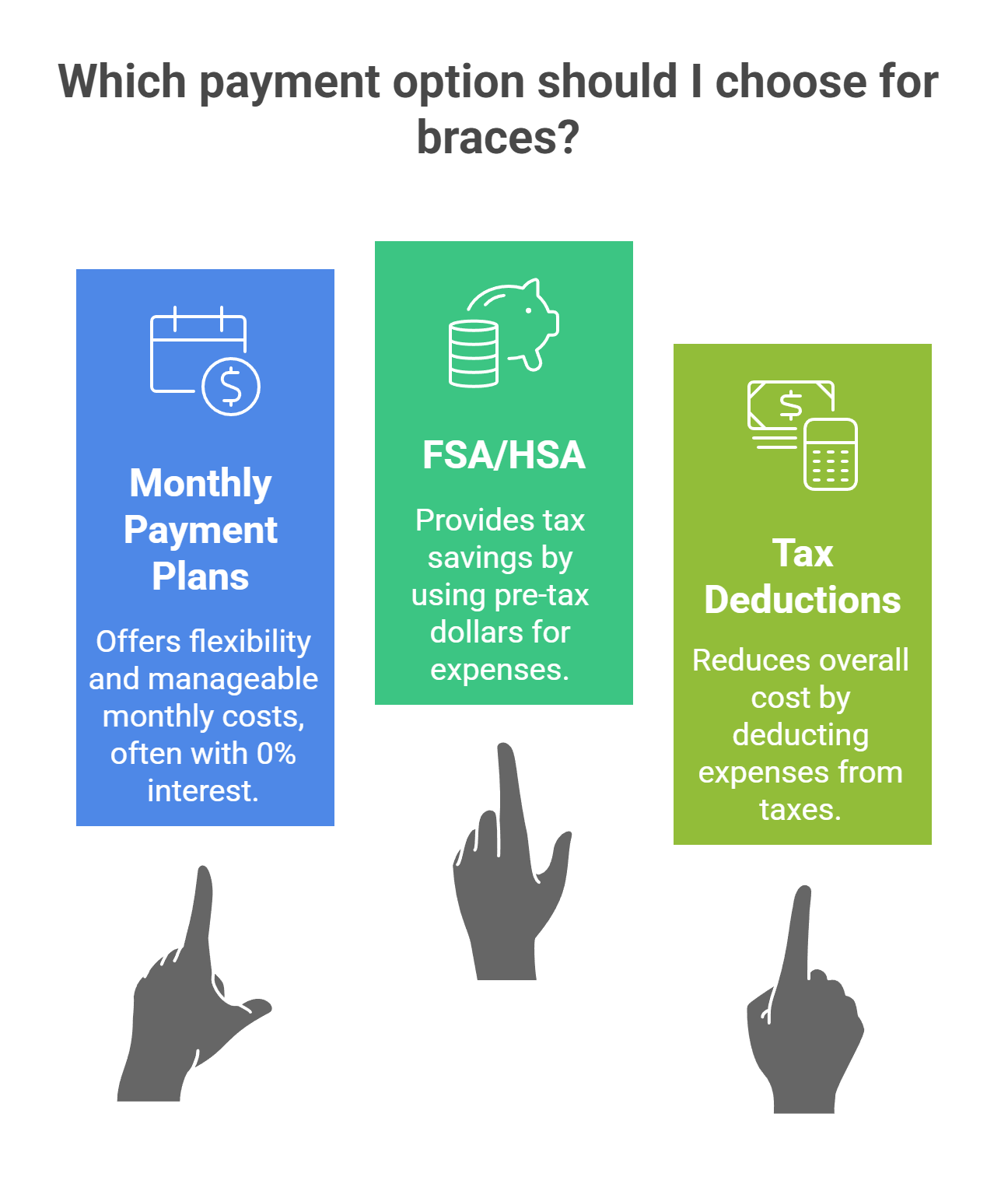
Various payment methods are available to make braces more affordable and accessible. Common payment options include financing plans, credit card payments, and in-house payment plans with orthodontists. Combining insurance coverage and financing plans can help patients manage the overall cost of braces effectively.
Flexible payment options, such as monthly payment plans and flexible financing options, are particularly helpful for spreading the expense over time. Often, these plans require an initial down payment followed by monthly installments, easing the budgeting for orthodontic treatment.
Monthly Payment Plans
Many orthodontic offices offer flexible payment plans that allow patients to spread the cost over the duration of the treatment. Some offices provide in-house financing with 0% interest, making it an attractive option for many families.
Typical monthly payments for braces range from $100 to $300, depending on the treatment type, down payment, and total fee.
Flexible Spending Accounts (FSA) and Health Savings Accounts (HSA)
Using an FSA or health savings account for orthodontic expenses can lead to substantial savings on taxes, as contributions to these accounts are made with pre-tax dollars.
These tax-advantaged accounts can significantly reduce out-of-pocket expenses for braces, making orthodontic treatment more affordable.
Tax Deductions for Braces
Braces may be tax-deductible if they are part of total medical expenses that exceed 7.5% of one’s adjusted gross income. Medical expenses must surpass this threshold to qualify for the tax deduction.
Dependent orthodontic expenses can also qualify for tax deductions under the same criteria.
Factors Affecting Braces Costs
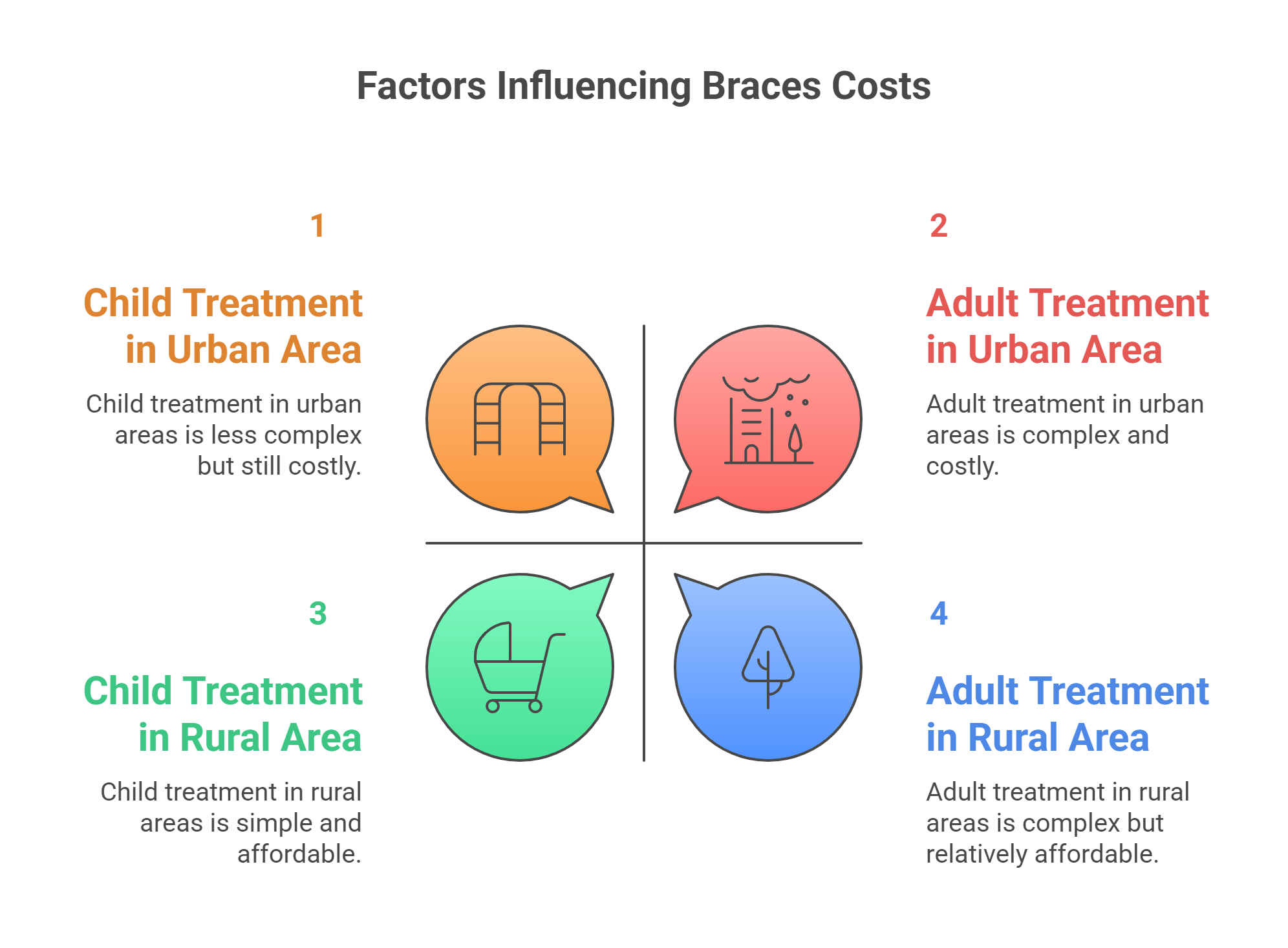
Several factors influence the cost of braces, including the type of braces selected, the complexity and duration of the treatment, and the orthodontist’s expertise and location. Modern orthodontic treatment options cater to different needs and budgets, allowing patients to choose the best fit for their situation.
Factors that affect the overall braces cost include:
Age and Treatment Cost
Orthodontic treatment usually costs more for adults compared to children or teenagers. Key points include:
-
On average, adult treatment tends to be 20-25% higher in cost.
-
Kids wear braces for less time.
-
The shorter duration is one reason braces for children are often less expensive than for adults.
Overall, this age-related cost difference emphasizes the significant investment of seeking orthodontic treatment as adult patients.
Geographic Location
Braces costs can differ significantly based on the geographic area due to local market conditions. Living costs in urban locations often lead to higher braces prices compared to rural areas. Urban areas generally have higher prices due to living costs and competition. In major metropolitan areas, braces typically cost significantly more than in rural areas by as much as 30% or more.
Case Complexity and Duration
The complexity of orthodontic cases is crucial in determining the total braces cost; more complex cases require longer treatment, increasing the overall price.
Factors such as crowding severity, bite alignment, jaw relationship, and spacing issues are key factors that help determine treatment complexity.
Comparing Clear Aligners and Traditional Braces
Clear aligners like Invisalign and traditional braces each have their own set of costs, benefits, and drawbacks. Traditional metal braces typically cost between $2,750 and $7,500, while clear aligners range from $3,500 to $8,000. The total cost of clear aligners can vary based on case complexity, the number of aligners needed, and the treatment duration.
Clear aligners offer aesthetic advantages and convenience, making them appealing to many patients. However, traditional braces may be more effective for severe misalignments, making them a better choice for some individuals.
Benefits and Drawbacks
Favored for their discretion, clear aligners are nearly invisible when worn. They offer a discreet and comfortable orthodontic solution, making them appealing to many patients. However, they require a commitment to wear them for 20-22 hours per day for effective results. Invisible aligners are ideal for patients who prioritize appearance during treatment.
Traditional braces, while more visible, may provide more consistent results for complex alignment issues.
Affordable Alternatives to Traditional Braces
There are several affordable alternatives to traditional braces for budget-conscious patients, including dental school programs, at-home clear aligners, and discount dental plans. These options can make orthodontic treatment more accessible without compromising on quality.
Dental school programs typically charge 30-50% less for orthodontic services compared to private practices. At-home clear aligners offer a lower-cost option for treating mild alignment issues, while discount dental plans provide immediate savings on orthodontic services without waiting periods or age restrictions.
Dental School Programs
Patients can receive orthodontic treatments at a reduced rate through dental school programs, which help students gain practical experience.
However, these clinics often have longer appointment times and less flexible scheduling compared to private practices.
At-Home Clear Aligners
At-home clear aligners are a budget-friendly alternative for those with mild alignment issues. Typically costing between $1,950 to $2,500, these aligners are significantly cheaper than traditional braces.
However, they are not suitable for significant bite correction or complex tooth movements and lack the professional supervision provided by traditional orthodontic treatments.
Final Thoughts
Understanding the costs associated with braces in 2025 is crucial for anyone considering orthodontic treatment. With options ranging from traditional metal braces to clear aligners, and various factors influencing the overall cost, it’s essential to be well-informed.
By considering insurance options, flexible payment plans, and affordable alternatives, patients can effectively manage their orthodontic expenses. Remember, investing in a confident smile is not just about aesthetics but also about long-term dental health and well-being.
Frequently Asked Questions
How much do braces cost in 2025?
In 2025, braces generally cost between $3,000 and $8,000, influenced by the type of braces used and the complexity of the treatment. It’s essential to consult with an orthodontist for a personalized estimate.
Does dental insurance cover braces?
Dental insurance often covers up to 50% of braces treatment costs, making it more affordable for those who need orthodontic care. Always check your specific plan for coverage details.
Are there affordable alternatives to traditional braces?
Yes, affordable alternatives to traditional braces include dental school programs, at-home clear aligners, and discount dental plans, which can significantly lower the cost of orthodontic treatment.
How do flexible spending accounts (FSA) and health savings accounts (HSA) help with braces costs?
Flexible spending accounts (FSAs) and health savings accounts (HSAs) can significantly reduce out-of-pocket expenses for braces, as they allow you to contribute pre-tax dollars, effectively lowering your overall costs. By utilizing these accounts, you can maximize your savings for dental care.
What factors affect the cost of braces?
The cost of braces is primarily influenced by the type of braces chosen, the complexity and duration of treatment, geographic location, and the orthodontist's expertise. These key elements collectively determine the overall expense of orthodontic care.















































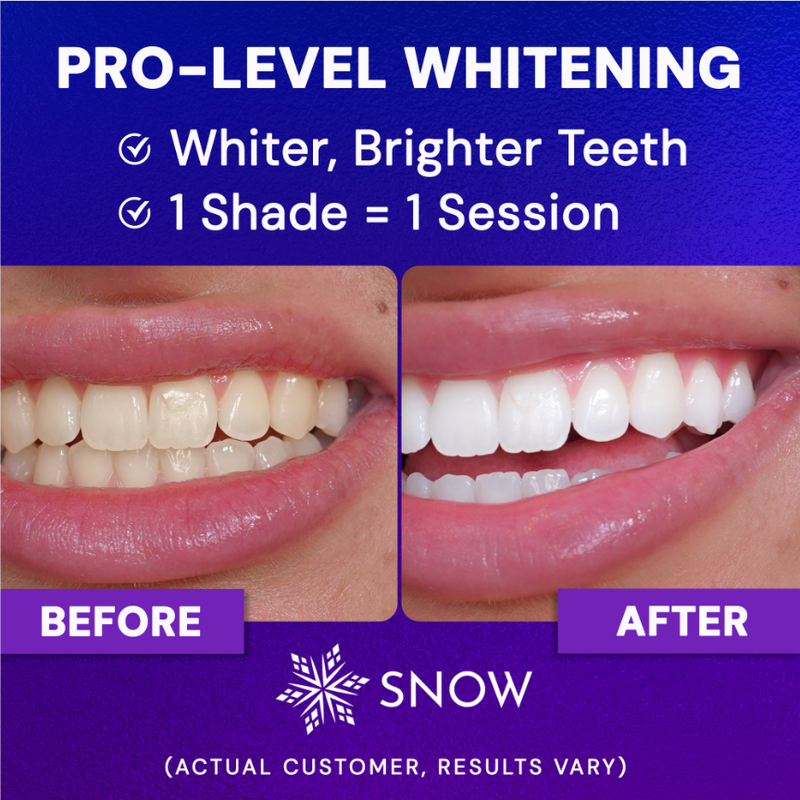

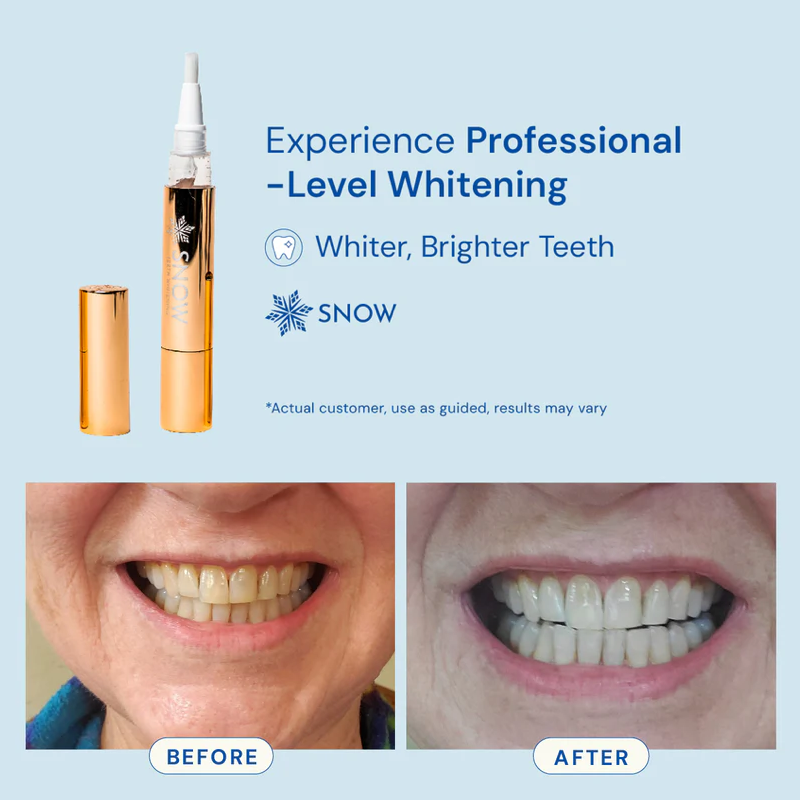


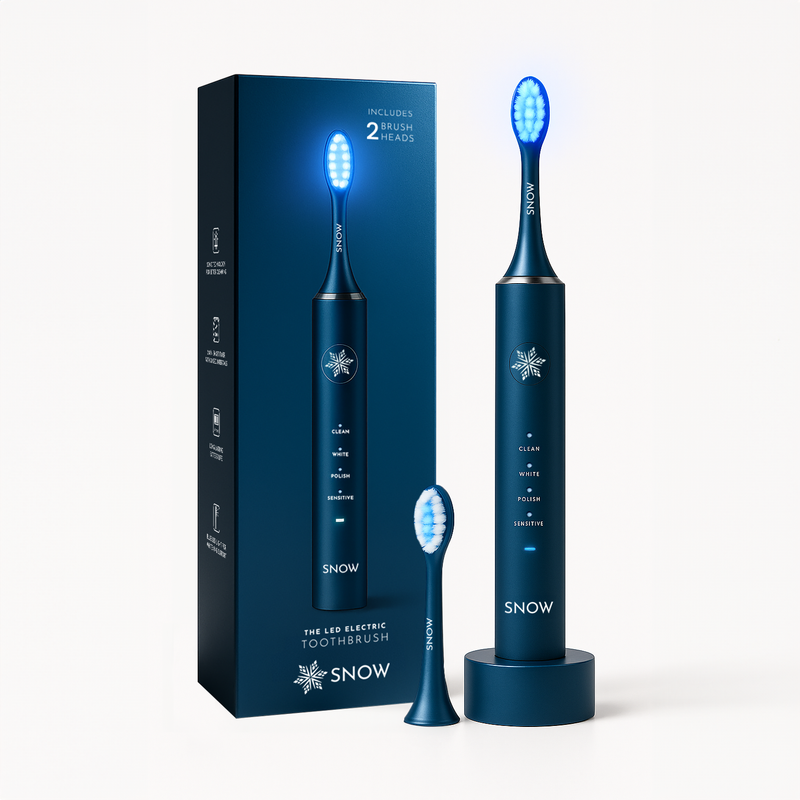


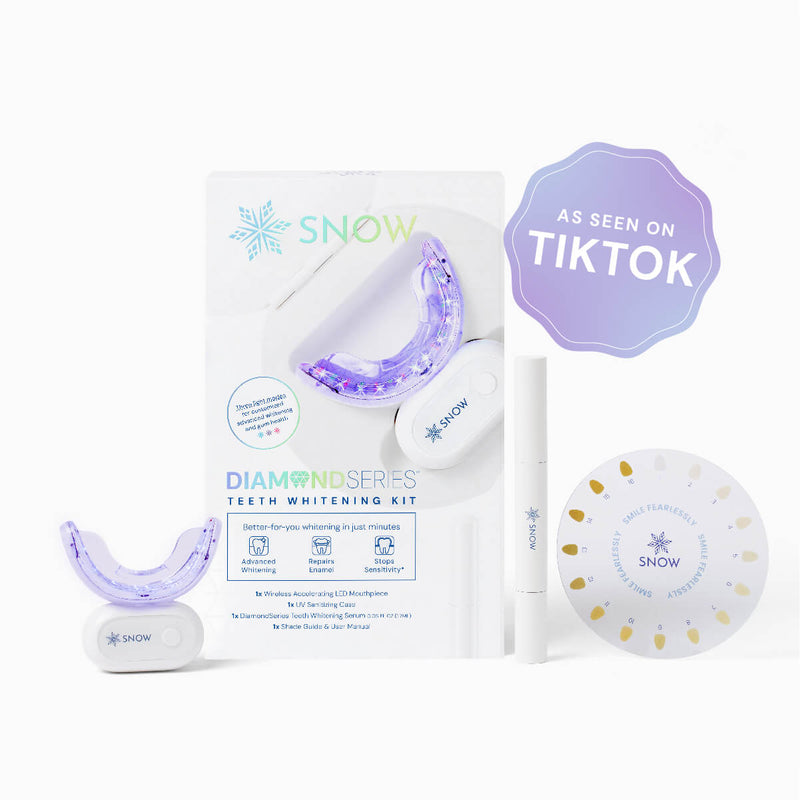
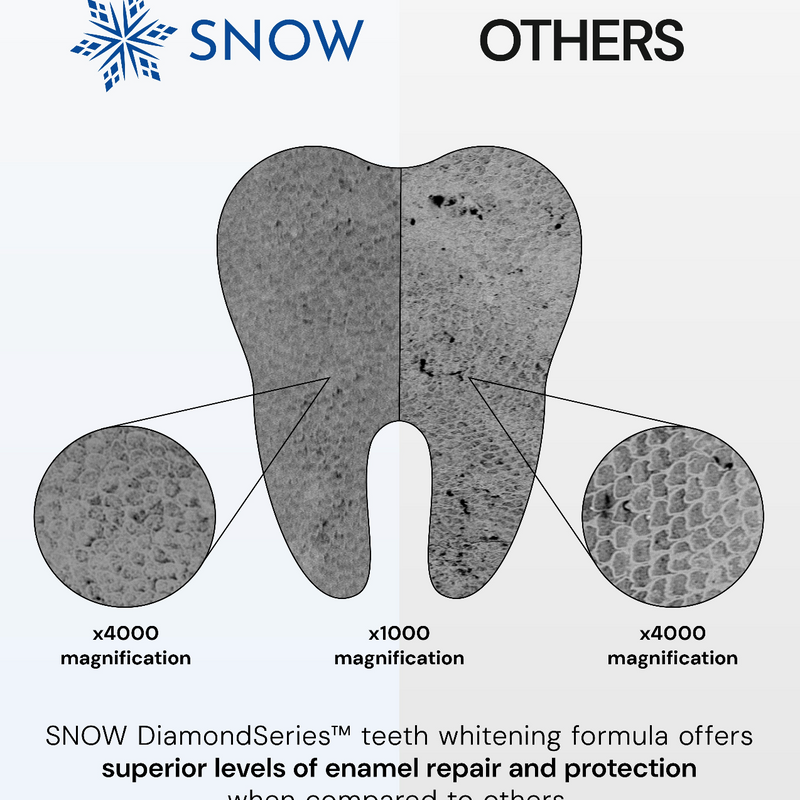









![Clove Oil for Toothache Relief [Does it Really Work]](http://www.trysnow.com/cdn/shop/articles/clove_oil_for_toothache_does_it_really_work.png?v=1756135924)
